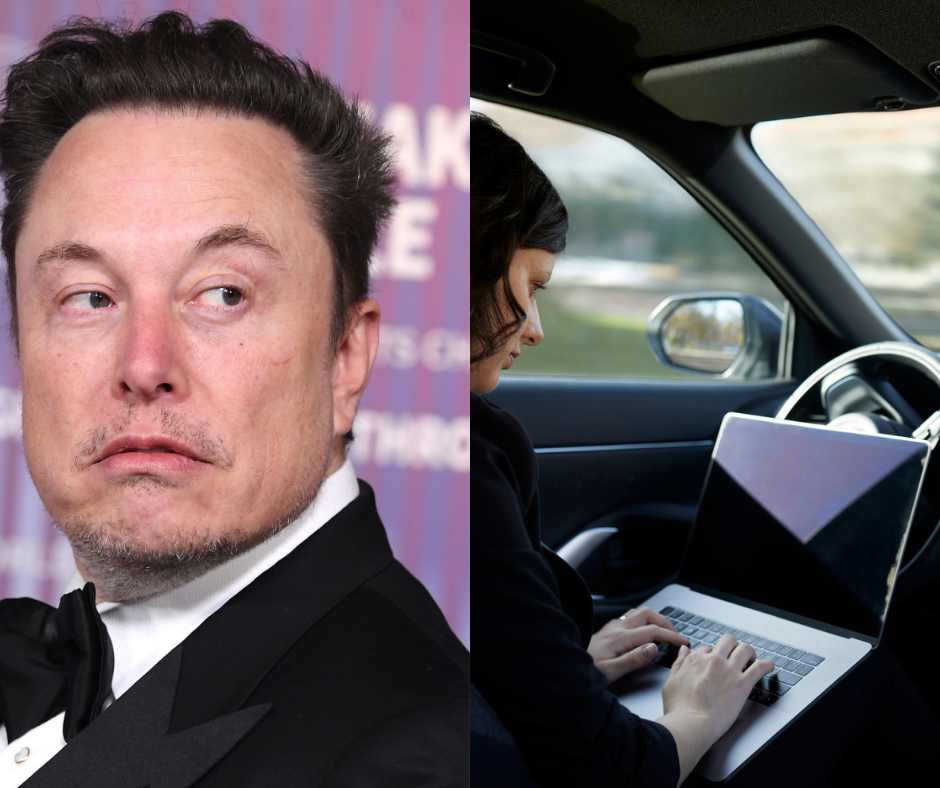During Tesla CEO Elon Musk’s visit to Beijing on Sunday (28 April) to discuss the rollout of its autopilot, or full self-driving (FSD) software, the US automaker won an endorsement from a top Chinese auto association, which saw its Model 3 and Y cars named compliant with China’s data security requirements.
The endorsement would give local governments the power to allow Tesla cars into parts of China they were previously banned from, according to Chinese media.
Tesla also reached an agreement with Chinese tech giant Baidu to use Tesla’s mapping license for data collection on China’s roads, according to Reuters, citing two people familiar with the matter.
Due to data security hurdles, Tesla has been offering a limited version of its FSD software in China for the last four years.
Tesla has stored all data collected by its vehicles in China domestically to appease Chinese regulators since 2021, acting as a major hurdle to widespread adoption in the country.
While Tesla’s endorsement from one of China’s auto associations is a positive step for a future unrestricted autopilot rollout in the country, it is unclear how many other hurdles Tesla will need to overcome for it to become a reality.
Why does Tesla want its autopilot software in China?
China is the largest automotive market in the world and remains the largest market for autonomous driving systems. A full rollout of autopilot in the country would allow Tesla to have a better chance at competing with its local rivals.
According to research and analysis company GlobalData’s Thematic Intelligence: Autonomous Vehicles (2023) report, China’s car makers are rapidly gaining ground from technology transfer through joint ventures with foreign car makers such as GM, Daimler, and BMW.
At the same time, a flurry of specialist start-ups funded and backed by state institutions and corporate venture capital firms (many of them foreign, such as Intel) is enabling China to compete in auto AI, according to the report.
China launched its “Made in China 2025” program in 2015, an ambitious 10-year-plan to achieve manufacturing self-reliance within the decade. A primary goal of that plan was to ensure its autonomous vehicle industry became the world’s best.
The country has focused on Level 4 and Level 5 self-driving testing, hoping to outpace other markets.
Level 5 autonomy relates to self-driving cars that do not require human interaction—meaning that when they’re eventually deployed, they won’t have steering wheels or pedals.
Despite Musk’s promises, Tesla’s FSD software has still not moved the system beyond Level 2. Level 2 driving consists of lane-centering capabilities alongside adaptive speed control.
Crucially, Tesla drivers are still required to be monitoring driving at all times and must intervene if something goes wrong.
Releasing full-scale FSD software in China will help provide a much-needed boost to Tesla’s declining EV sales. In April, Musk reaffirmed his commitment to making self-driving technology a significant revenue source for the company.
Tesla’s vehicle deliveries in the first quarter fell for the first time in nearly four years. The company began the second quarter announcing layoffs of more than 10% of its global workforce and slashing vehicle prices in major markets, including the US, China and Europe.
Why is Tesla’s FSD rollout so slow in the US?
Tesla has been heavily criticised by the leading US auto safety regulator for being complacent about driver safety.
The National Highway Traffic Safety Administration (NHTSA) argues that Tesla owners are using the system beyond its intended purpose and that the title autopilot or FSD is misleading.
The regulator closed a three-year probe into Tesla’s autopilot system crashes in April. The regulator claimed 13 of the crashes were fatal.
Last week, the regulator said that Tesla’s autopilot label could lead drivers to “believe that the automation has greater capabilities than it does and invite drivers to overly trust the automation”.
According to GlobalData, the difficulty of commercialising autonomous vehicles has been one of the industry’s biggest hurdles.
“The early hype in expectations, a period that went from approximately 2015 to 2020, has given way to far more realistic positioning as the wide range of challenges to full commercial deployment becomes clearer,” according to GlobalData’s thematic research in autonomous driving.
The autonomous driving systems market size was 212.5 million units in 2023, according to GlobalData’s 2024 market analysis.
The market will grow at a compound annual growth rate of more than five percent during 2023-2028, according to the report.
“What would a full rollout of autopilot in China mean for Tesla?” was originally created and published by Verdict, a GlobalData owned brand.
The information on this site has been included in good faith for general informational purposes only. It is not intended to amount to advice on which you should rely, and we give no representation, warranty or guarantee, whether express or implied as to its accuracy or completeness. You must obtain professional or specialist advice before taking, or refraining from, any action on the basis of the content on our site.
